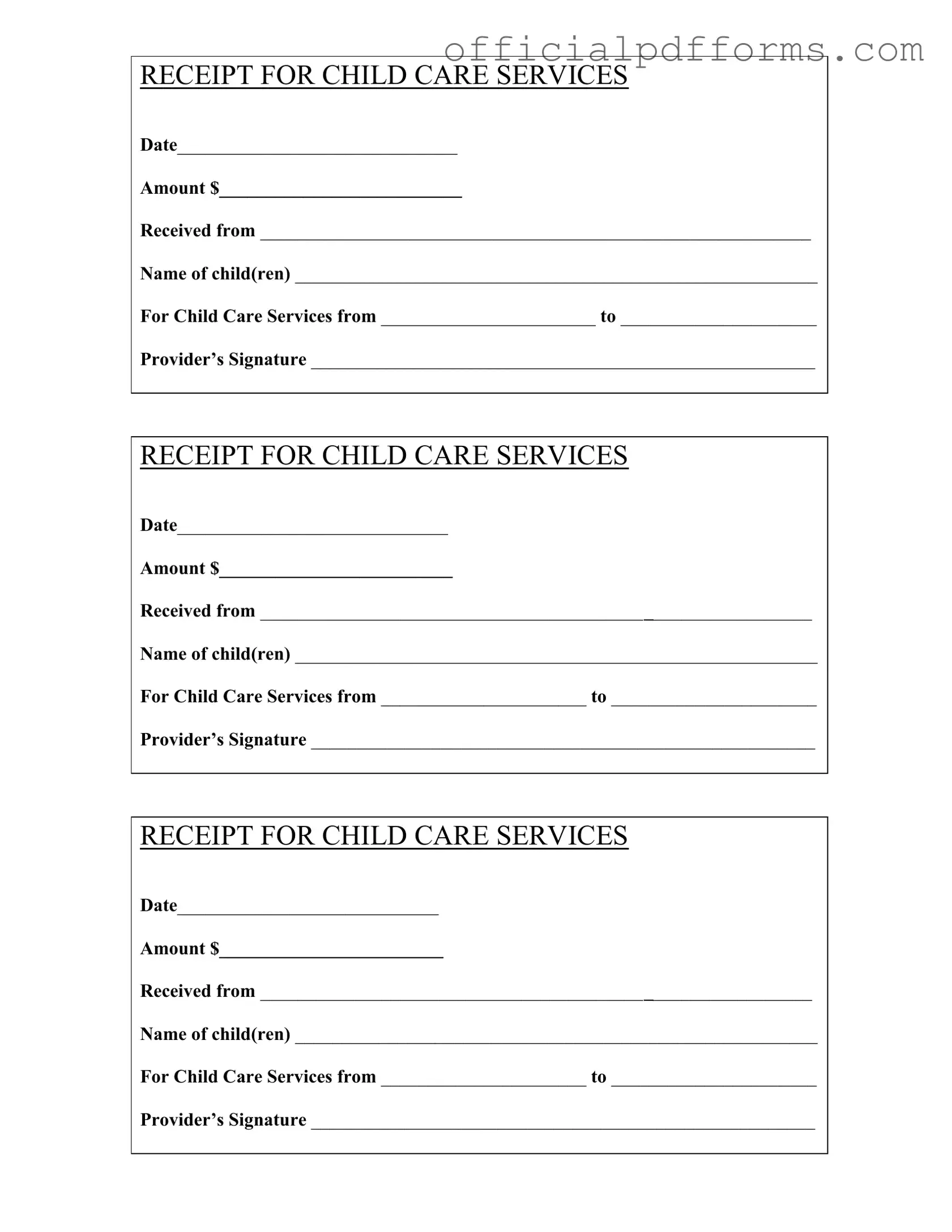Fill in a Valid Childcare Receipt Form
The Childcare Receipt form serves as an official document that verifies payment for childcare services rendered. This form includes essential details such as the date, amount paid, and the name of the child or children receiving care. To ensure proper record-keeping and potential tax benefits, it's important to fill out this form accurately.
Ready to get started? Click the button below to fill out the Childcare Receipt form.
Access Form Online
